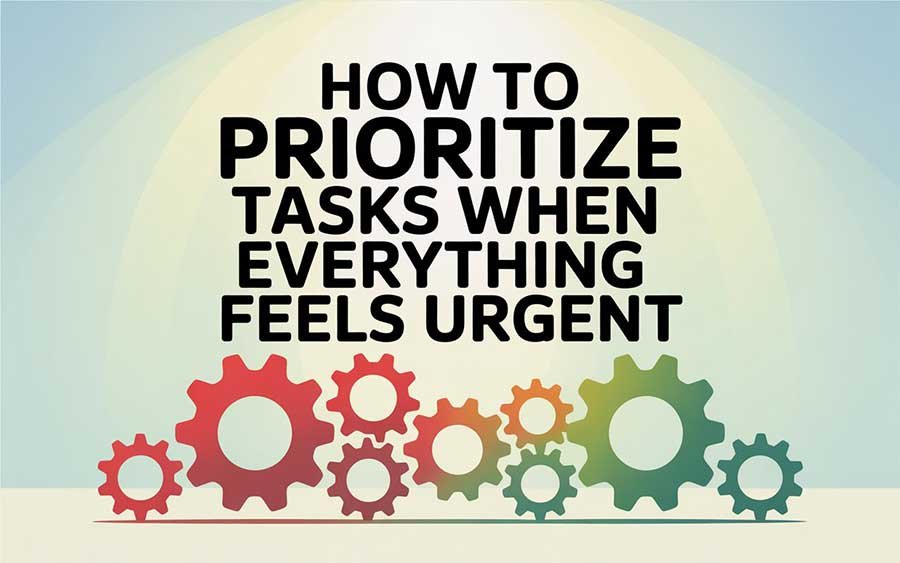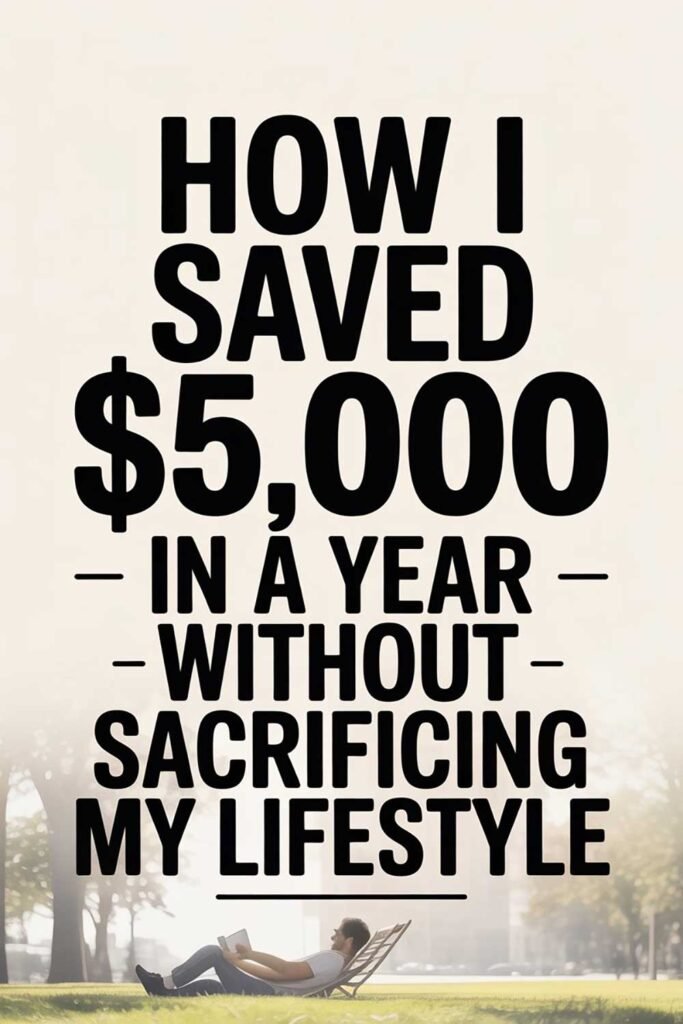
Escaping the Fire Drill: How to Prioritize Tasks When Everything Feels Urgent (Your Ultimate Blueprint for Calm & Clarity)
Does your daily life often feel like a never-ending series of fire drills? You wake up, and immediately, your inbox is overflowing, your phone is buzzing with notifications, and your mental to-do list spirals into an overwhelming abyss. Every task screams “urgent!”, demanding your immediate attention, leaving you feeling constantly reactive, scattered, and utterly exhausted. You jump from one demand to the next, putting out fires, yet at the end of the day, despite frantic activity, you wonder why your most important goals remain untouched, and true progress feels elusive.
I know this feeling intimately. For years, I was trapped in what I called the “urgency treadmill.” My days were a chaotic blur of reactivity. I’d respond to every email instantly, tackle every new request as if it were a five-alarm emergency, and constantly feel behind, despite working longer and harder. My desk was cluttered, my digital space was a labyrinth of open tabs, and my brain felt like a browser with 50 windows open at once, each screaming for attention. The result? Burnout, immense stress, and the disheartening realization that while I was busy, I wasn’t actually moving forward on what truly mattered to me. I craved clarity and focus, but the sheer volume of “urgent” tasks seemed to make genuine prioritization an impossible dream.
But here’s the profound truth I discovered: when everything feels urgent, nothing truly is. This constant state of emergency is a pervasive illusion, a trap set by modern demands, digital notifications, and our own ingrained habits. The path to escaping this tyranny of the urgent isn’t about working harder or faster; it’s about working smarter, with profound clarity, strategic intention, and unwavering discipline. It’s about understanding the crucial difference between what feels urgent and what is truly important, and then deliberately choosing to focus your energy where it yields the greatest impact and aligns with your deepest values.
This comprehensive guide is designed to be your ultimate blueprint for mastering prioritization when the world demands your attention from every direction. We’ll expose the insidious nature of the “urgency trap,” unpack its damaging effects, and provide a powerful, step-by-step framework to identify your true priorities, protect your valuable time, and consistently achieve your most meaningful goals. Get ready to ditch the overwhelm, reclaim your focus, and transform your daily life from chaotic reaction to calm, purposeful action.
The Tyranny of the Urgent: Why Everything Feels Like a Fire Drill (and the Cost of Not Prioritizing)
In our always-on culture, the “tyranny of the urgent” is a relentless force, pushing us into a state of perpetual reactivity. Here’s why it feels like everything is a fire drill, and the steep price we pay for succumbing to it:
- Notification Overload: Our smartphones and digital tools are designed to demand attention. Every ping, every red dot, every badge notification creates an immediate pull, blurring the lines between critical and trivial. This constant interruption fragments our focus and makes true deep work challenging.
- Fear of Missing Out (FOMO) & People-Pleasing: There’s a pervasive societal pressure to be “responsive,” to reply instantly, and to accommodate every request. This often stems from a fear of missing an opportunity, falling behind, or disappointing someone. This desire to be helpful or liked can lead us to say “yes” to every request, regardless of its true importance or its impact on our own priorities.
- Lack of Clear Goals: Without a strong, clearly defined sense of what’s truly important to us (our values, our long-term objectives), every new task that comes along feels equally valid and urgent. We lack an internal filter to discern what truly warrants our immediate attention.
- The Adrenaline Rush: For some, constantly putting out fires can create a subconscious addiction to the adrenaline rush. This leads to mistaking frantic busyness for genuine productivity and accomplishment. The thrill of the “crisis” can become a self-perpetuating cycle.
- Consequences of Constant Reactivity:
- Burnout & Exhaustion: Continuously running on adrenaline is unsustainable. This leads to mental, emotional, and physical depletion, characterized by fatigue, irritability, and a diminished capacity to perform effectively.
- Missed Important Goals: The “urgent” tasks often push aside the “important” ones. This means that long-term goals related to career advancement, personal development, significant projects, or crucial relationships are consistently delayed or entirely derailed. You’re busy, but not truly moving forward.
- Superficial Work: Constant context-switching, driven by jumping from one “urgent” task to another, prevents deep, focused work. This results in lower quality output, more mistakes, and a struggle to engage in complex problem-solving or creative thinking.
- Increased Stress & Anxiety: Living in a perpetual state of “crisis” keeps your nervous system in overdrive. This contributes to chronic stress, heightened anxiety, and a feeling of being constantly overwhelmed and out of control.
- Lack of Fulfillment: Despite being incredibly busy and active, you may experience a profound, lingering sense of unfulfillment because you’re not actually making progress on what truly matters to you. Your actions are driven by external demands, not internal purpose.
Escaping this trap requires a deliberate, strategic approach, not just more effort. It’s about training your brain to distinguish between true urgency and perceived urgency, allowing you to reclaim your focus and drive meaningful progress.
Your Prioritization Blueprint: How to Regain Control When the World Demands Your Attention (Step-by-Step Guide)
This blueprint is designed to help you differentiate between the noise and the true signals, empowering you to consistently focus your precious time and energy where it yields the greatest impact. It’s about training your brain to think differently about urgency and take command of your day.
Pillar 1: Create Mental Space (The Decompression Chamber)
Before you can organize tasks, you need to calm your mind and clear the mental clutter. This initial phase is about creating clarity.
1. The Mindful Pause & Brain Dump:
- The Hack: The moment you feel overwhelmed or triggered by a new demand, resist the urge to immediately react. Instead, stop what you’re doing, take 3-5 slow, deep breaths. Then, grab a notebook, a blank document, or open a digital list app (like Todoist or Notion). Rapidly jot down everything that’s buzzing in your brain: tasks, ideas, worries, commitments, appointments, phone calls you need to make, emails to send – absolutely everything. Don’t filter, don’t organize, just dump.
- Why it Works: Your brain is an excellent idea generator but a terrible filing cabinet. Getting everything out of your head and onto paper immediately reduces mental clutter and the feeling of overwhelm. The abstract “mountain” of tasks becomes a concrete, manageable list that you can then process. This move from feeling controlled by your thoughts to observing them is a powerful first step in gaining clarity.
- Real-Life Example: Sarah, a project manager, used to open her email first thing in the morning and immediately feel a surge of panic as urgent requests piled in. She now starts her day with a 5-minute “brain dump” before touching her inbox. “I write down every single thing that’s making me anxious, every looming task,” she says. “It’s like hitting a mental reset button. I can physically see the actual list of demands, rather than just feeling overwhelmed by the idea of them. That immediate clarity allows me to approach the rest of my morning with calm and focus.”
2. Disconnect & Protect Your Focus:
- The Hack: Proactively create focused environments by minimizing digital distractions. Turn off non-essential notifications on your phone and computer (even for social media or news). Use website blockers for distracting sites during work hours. Have “no-phone zones” in your home (e.g., bedroom, dining table). Create a clear “digital sunset” where all non-essential screens are off at least an hour before bed.
- Why it Works: Digital distractions are insidious time and energy thieves. By eliminating their constant pings and visual temptations, you protect your focus during productive periods and ensure your downtime is truly restorative, free from the constant pull of the “always-on” mentality. This allows your brain to engage in deep work and truly recharge.
- Real-Life Example: Andrew, a remote software developer, found himself constantly pulled into social media spirals and news feeds during his workday. He installed a website blocker on his computer that activated during his core work hours, and he started leaving his phone in a different room while working on complex tasks. “It was hard at first, almost like a withdrawal,” he admitted. “But after a week, my focus improved dramatically. I got more done in fewer hours, which meant I could truly unplug and enjoy my evenings without feeling the constant urge to check my phone or email. This focused environment makes a huge difference to my output.”
Pillar 2: Define Your True North (Clarity & Purpose)
If everything feels urgent, it’s often because you haven’t clearly defined what’s truly important to you. Your values and long-term goals act as your ultimate filter.
3. Clarify Your Values & Long-Term Goals:
- The Hack: Take time for deep self-reflection. What are your 1-3 core values that truly drive you (e.g., Integrity, Growth, Family, Contribution, Freedom, Health)? What are your 1-3 most important long-term personal and professional goals for the year, or even the next 5-10 years (e.g., Launching a business, achieving financial independence, writing a book, strengthening key relationships)? Write these down clearly.
- Why it Works: Your values and long-term goals provide the ultimate context for prioritization. They act as a powerful internal filter. When a new task or request comes in, you can ask: “Does this task genuinely align with my core values?” and “Does this task move me closer to my top long-term goals?” If the answer is “no” to both, it’s likely not truly important for you, no matter how urgent it feels to someone else. This allows you to say “no” with conviction, or to deprioritize tasks effectively.
- Real-Life Example: Mark felt constantly pulled in different directions at work, struggling to make progress on his own strategic projects. He sat down and defined his core values as “Innovation” and “Impact.” His top long-term goal was to “Lead a new, impactful product line.” Now, when a task came in, he’d ask himself, “Does this task genuinely foster innovation or drive significant impact for my team/product?” If it was just busywork or a low-value request that didn’t align, he learned to politely decline, delegate, or defer. “That filter immediately clarified my workload,” he shared. “It allowed me to focus on what truly mattered to my career growth.”
4. Understand the Urgent vs. Important (The Eisenhower Matrix):
- The Hack: This classic time management tool is your best friend for quickly categorizing and processing tasks from your brain dump. Draw a 2×2 matrix (or visualize it in your mind):
- Quadrant 1: Urgent & Important (DO NOW): These are true crises, deadlines, critical problems, and emergencies. (e.g., a client emergency, a project due in an hour, a sudden health issue). Tackle these immediately.
- Quadrant 2: Important, Not Urgent (SCHEDULE): This is the quadrant of strategic planning, prevention, relationship building, personal growth, skill development, and long-term goals. (e.g., career planning, exercise, networking, learning a new skill, building systems). These are your growth and purpose activities. Schedule dedicated, protected time for these.
- Quadrant 3: Urgent, Not Important (DELEGATE/MINIMIZE): These are interruptions, some emails, minor requests from others, or popular but low-impact meetings. (e.g., a colleague asking for quick help with something they could do, non-critical phone calls). Try to delegate these, automate them, or quickly address them without deep focus.
- Quadrant 4: Not Urgent, Not Important (ELIMINATE): These are distractions and time-wasters that provide little value. (e.g., endless social media scrolling, binge-watching TV, excessive unproductive meetings, mindless web surfing). Cut these ruthlessly from your schedule.
- Why it Works: This matrix forces you to distinguish between perceived urgency (often driven by external demands or notifications) and actual importance (driven by your goals and values). It makes the invisible choice visible, empowering you to say “no,” “later,” or “someone else” to low-value tasks. It’s a foundational framework for effective prioritization, providing clarity on how to approach your daily responsibilities. This strategic tool is also the core concept behind how to prioritize when everything feels urgent, giving you a direct method to sort through your tasks.
- Real-Life Example: Jessica, a student juggling classes, a part-time job, and social commitments, used the Eisenhower Matrix. She realized her fear of missing out made her classify every club email or social media update (which were Q3/Q4 tasks) as “do now,” pulling her away from studying (her crucial Q2 task). By visually categorizing her tasks, she learned to schedule quick email checks and dedicate protected blocks to her studies, significantly reducing her overall stress and improving her grades.
Pillar 3: Strategic Action (The Execution Phase)
Once your tasks are categorized and your priorities are clear, it’s time to execute with precision, rather than frantic energy.
5. Identify Your Most Important Tasks (MITs):
- The Hack: From your “Important” list (especially Quadrant 2), pinpoint the 1-3 Most Important Tasks (MITs) for today. These are the tasks that, if completed, would make the biggest impact on your goals, or would otherwise be the most difficult or critical to start. These often align with the Pareto Principle (80/20 Rule), where 20% of your efforts yield 80% of your results.
- Why it Works: This razor-sharp focus prevents dilution of effort. By committing to tackling these few high-leverage activities first, you ensure that even if the rest of your day gets derailed, you’ve made significant progress on what truly matters. It creates a powerful sense of accomplishment and reduces mental clutter.
- Real-Life Example: Tom, a sales manager, used to arrive at his desk and immediately dive into emails, often getting pulled into low-priority tasks. After implementing the MIT strategy, he’d take 10 minutes to identify his top 3 non-negotiable tasks for the day – for example, “Call potential client X,” “Finalize proposal for Y,” and “Outline new marketing strategy.” “I found I tackled those high-impact tasks first, and often completed them by noon,” he explained. “It’s a small chunk of time that prevents me from wasting hours and ensures my day moves the needle.”
6. Time Block Your Priorities:
- The Hack: Once you’ve identified your MITs, translate them into specific time blocks on your calendar. Treat these blocks like non-negotiable appointments. During these “deep work” blocks, close all distractions and focus solely on your MIT. Also, block out time for breaks, lunch, and a clear end to your workday.
- Why it Works: What gets scheduled gets done. Time blocking protects your focus time, reduces context-switching (a major productivity killer), and forces you to confront how much you can realistically accomplish. It makes you proactive about your time rather than reactive.
- Real-Life Example: Lisa, a busy freelance designer, used to have an open calendar and constantly got pulled into impromptu client calls or minor design tweaks. She started blocking “Deep Work: Client Project A” from 9 AM to 11 AM, and “Deep Work: Strategic Planning” from 1 PM to 3 PM. She’d politely decline meeting invites that infringed on her deep work blocks, or suggest alternative times. “My clients and colleagues quickly learned to respect my blocked time,” she shared. “My productivity on complex creative tasks soared because I had dedicated, uninterrupted time, and I could then enjoy my breaks and evenings without guilt.”
7. Batch & Automate (Efficiency Wins):
- The Hack: Streamline tasks that don’t require deep, focused attention.
- Batch Similar Tasks: Group all your emails, phone calls, administrative duties, or errands together. Do them all at once during a dedicated time slot, rather than responding to them as they come in.
- Automate Recurring Tasks: Use digital tools or apps to automate bill payments, set reminders for recurring tasks, or organize digital files.
- Why it Works: Batching minimizes context-switching, which is a major energy drain. It allows your brain to stay in one mode, increasing efficiency. Automation frees up mental bandwidth and time, allowing you to dedicate more focused energy to your high-impact priorities. These strategies are critical for optimizing your workflow and achieving more, aligning perfectly with productivity professional tips for time management. To gain a deeper understanding of how to implement such strategies, explore how to prioritize tasks like a productivity pro – time management.
- Real-Life Example: Jessica used to dread her weekly administrative tasks because they were scattered throughout her day. She started batching them: all invoices on Monday morning, all emails on Tuesdays and Thursdays at specific times, all file organization on Friday afternoon. “It felt so much more efficient,” she said. “Instead of constantly getting pulled away, I could tackle it all in one go, leaving the rest of my time for creative work without interruption.”
Pillar 4: Cultivate Resilience & Sustainability (The Long Game)
Prioritization isn’t a one-time event; it’s an ongoing practice that requires mental fortitude and adaptability. This phase focuses on building long-term stamina.
8. Master the Art of “No” (Setting Boundaries):
- The Hack: This is arguably the hardest, yet most liberating, step in prioritizing. Politely but firmly decline requests, invitations, or commitments that don’t align with your priorities, values, or energy levels.
- How to Say No (Gracefully):
- “I appreciate you thinking of me, but I’m not able to take that on right now.”
- “My current priorities for [Project X] require my full focus until [date], so I’ll have to pass on this.”
- “I can’t take on the whole project, but I could help with [specific small part].”
- “No” to one thing is a powerful “yes” to something more important to you.
- Why it Works: Saying “no” protects your boundaries, your time, and your energy. It prevents others’ “urgency” from becoming your priority, allowing you to stay focused on your own goals. It’s a powerful act of self-respect and boundary setting that is essential for sustainable productivity.
- Real-Life Example: Tom, a kind and helpful team member, was constantly overloaded because he rarely said no to extra work or favors for friends. He learned to say, “I’d love to help, but my current priorities for [Project X] require my full focus until [date]. Can we revisit this then, or is there someone else who could assist?” This simple script freed up hours each week, allowing him to focus on his own critical tasks without resentment or burnout.
9. Plan for Rest & Recovery:
- The Hack: Recognize that rest is not a luxury or a reward for exhaustion, but a fundamental input for sustained high performance. Proactively schedule rest, breaks, and recovery time into your calendar.
- Schedule your lunch break and take it away from your desk.
- Block out time for exercise and leisure activities.
- Prioritize sufficient sleep (7-9 hours).
- Implement a clear “digital sunset” at the end of your day.
- Why it Works: Consistent rest prevents burnout, boosts creativity, improves focus, and enhances decision-making. When you’re well-rested, you’re more efficient during your productive periods. This proactive approach to well-being is critical for sustainable productivity, making it essential to understand how to avoid burnout while staying productive in 2025 right now and is a core component of overall thriving. Prioritizing self-care isn’t selfish; it’s essential. For deeper insights into why, explore 7 reasons why you should prioritize self-care.
- Real-Life Example: Chrissy, a remote worker, used to power through her day without breaks, feeling exhausted by evening. She now schedules a 30-minute power walk at midday and a clear “end of workday” time. “It felt counterintuitive to stop when I was in flow,” she admitted, “but I actually get more done because my focus is sustained for longer periods. I’m less stressed, and my work quality is higher because I’m not running on fumes.”
10. Build Daily Habits for Consistency:
- The Hack: The sum of your daily habits defines your productivity and your life. Focus on establishing a few key, high-impact daily habits that support your priorities. This could be a morning routine that primes you for focus, consistent tracking of your MITs, or a nightly review.
- Why it Works: Habits automate decision-making, reduce reliance on willpower, and ensure consistent progress on your most important goals. They create momentum and make purposeful action feel effortless over time. Starting your day with intention can set you up for success. Learn more about effective morning practices, including those that help boost self-control through morning routines, which are vital for sustained prioritization.
- Real-Life Example: David, notorious for procrastination, started a morning routine that included planning his top 3 MITs. He also committed to a daily 25-minute “focus sprint.” “It was tiny steps,” he shared, “but by consistently doing those few habits every day, I suddenly started making huge progress on long-delayed projects. My daily routine became my productivity engine.”
11. Embrace Flexibility & Learn from Setbacks:
- The Hack: Your prioritization system is a guide, not a rigid dictator. Life will happen. Unexpected events, new opportunities, or personal challenges will arise. Don’t let a missed task or an unplanned event derail your entire system. Simply acknowledge it, learn from it, adjust your priorities for the remainder of the day/week, and move forward.
- Why it Works: Perfectionism is the enemy of progress. Embracing flexibility and viewing setbacks not as failures, but as valuable learning opportunities, makes your prioritization process resilient and sustainable. It allows you to adapt to change without losing sight of your ultimate goals. This mindset is crucial for overcoming procrastination and maintaining momentum, as discussed in strategies to overcome procrastination in 2025, focusing on proactive problem-solving.
- Real-Life Example: Maria had planned a perfect week, but a sudden family emergency required her full attention for two days. Instead of feeling defeated, she quickly reprioritized her tasks, pushed back non-urgent items, and focused solely on the critical few that still needed attention. “My old self would have just given up and felt overwhelmed,” she admitted. “Now, I see these as tests of my system’s flexibility. I learned to adapt, not abandon.”
Common Prioritization Pitfalls to Avoid:
To truly master prioritization, be aware of and actively avoid these common traps that often derail even the best intentions:
- Living in Your Inbox: Allowing emails and messages to dictate your priorities. Your inbox is a collection of other people’s priorities, not your own to-do list.
- Saying “Yes” Too Much: Overcommitting to requests that don’t align with your goals or values, leading to an overstuffed schedule and diluted focus.
- Lack of a Clear “Why”: Without a strong, emotional reason for your top goals, it’s easy for them to get pushed aside by seemingly urgent, but ultimately unimportant, tasks.
- Not Reviewing Your Priorities: Setting a plan once and never looking at it again. Priorities need regular check-ins and adjustments to remain relevant.
- Ignoring Personal Well-being: Sacrificing sleep, rest, self-care, or healthy boundaries. This leads to burnout, which inevitably destroys productivity and decision-making ability.
- Getting Lost in Busywork: Spending too much time on low-impact tasks that feel productive but don’t actually move the needle on your most important goals.
- Perfectionism: Agonizing over minor details or waiting for the “perfect” time to start, leading to procrastination and missed opportunities.
Picture This…
Imagine waking up each day not to the dread of an overflowing inbox, but with a profound sense of calm and clarity. Your daily tasks are organized, your priorities are crystal clear, and you move through your day with a focused intention, rather than frantic reactivity. When an unexpected demand arises, you calmly assess its true importance against your core values and long-term goals, and confidently respond with “yes,” “no,” or “later,” as appropriate. You consistently make tangible progress on your most meaningful projects, enjoy deeper periods of focused work, and end your day feeling genuinely accomplished and fulfilled, knowing you’ve spent your precious time and energy on what truly matters. This isn’t just about managing tasks; it’s about mastering your attention, reclaiming your time, and building a life of purpose, peace, and profound impact.
20 Powerful Quotes on Prioritization, Focus, and Time Management
- “The key is not to prioritize what’s on your schedule, but to schedule your priorities.” – Stephen Covey
- “What you pay attention to grows. What you don’t pay attention to fades.” – Unknown
- “Concentration is the root of all the higher abilities in man.” – Bruce Lee
- “Focus on being productive instead of busy.” – Tim Ferriss
- “The main thing is to keep the main thing the main thing.” – Stephen Covey
- “It is not enough to be busy; so are the ants. The question is: What are we busy about?” – Henry David Thoreau
- “The difference between successful people and very successful people is that very successful people say ‘no’ to almost everything.” – Warren Buffett
- “You will never find time for anything. If you want time, you must make it.” – Charles Buxton
- “Don’t confuse activity with productivity. Many people are busy doing nothing.” – Unknown
- “The secret of getting ahead is getting started. The secret of getting started is breaking your complex overwhelming tasks into small manageable tasks, and then starting on the first one.” – Mark Twain
- “By failing to prepare, you are preparing to fail.” – Benjamin Franklin
- “Until we can manage time, we can manage nothing else.” – Peter Drucker
- “The ability to concentrate and to use your time well is everything if you want to succeed in business – or almost anywhere else for that matter.” – Lee Iacocca
- “The essence of strategy is choosing what not to do.” – Michael Porter
- “Action is the foundational key to all success.” – Pablo Picasso
- “Discipline is the bridge between goals and accomplishment.” – Jim Rohn
- “The best way to predict the future is to create it.” – Peter Drucker
- “Being busy is a form of laziness – lazy thinking and indiscriminate action.” – Timothy Ferriss
- “The average person thinks about what they want to achieve. The high achiever focuses on how they will achieve it.” – Unknown
- “If you want to live a life of meaning and impact, you must learn to protect your attention.” – Cal Newport
Disclaimer
Please note: This article is intended for general informational and personal development purposes only and is based on common productivity principles, time management strategies, and anecdotal experiences. The effectiveness of these methods may vary for individuals based on their unique circumstances, personality, and commitment. This content is not a substitute for professional coaching, therapy, or specialized advice tailored to specific personal or professional challenges like chronic overwhelm, burnout, ADHD, or other mental health concerns. If you are struggling significantly, please consider consulting with a qualified professional. Always adapt strategies to your unique needs and seek professional guidance when necessary.
Share This Article!
Are you ready to escape the tyranny of the urgent and reclaim your focus for what truly matters? If this blueprint for prioritization has inspired you, please share it with friends, family, or on your social media! Let’s empower more people to transform their days from chaotic to calm, purposeful, and profoundly productive.






